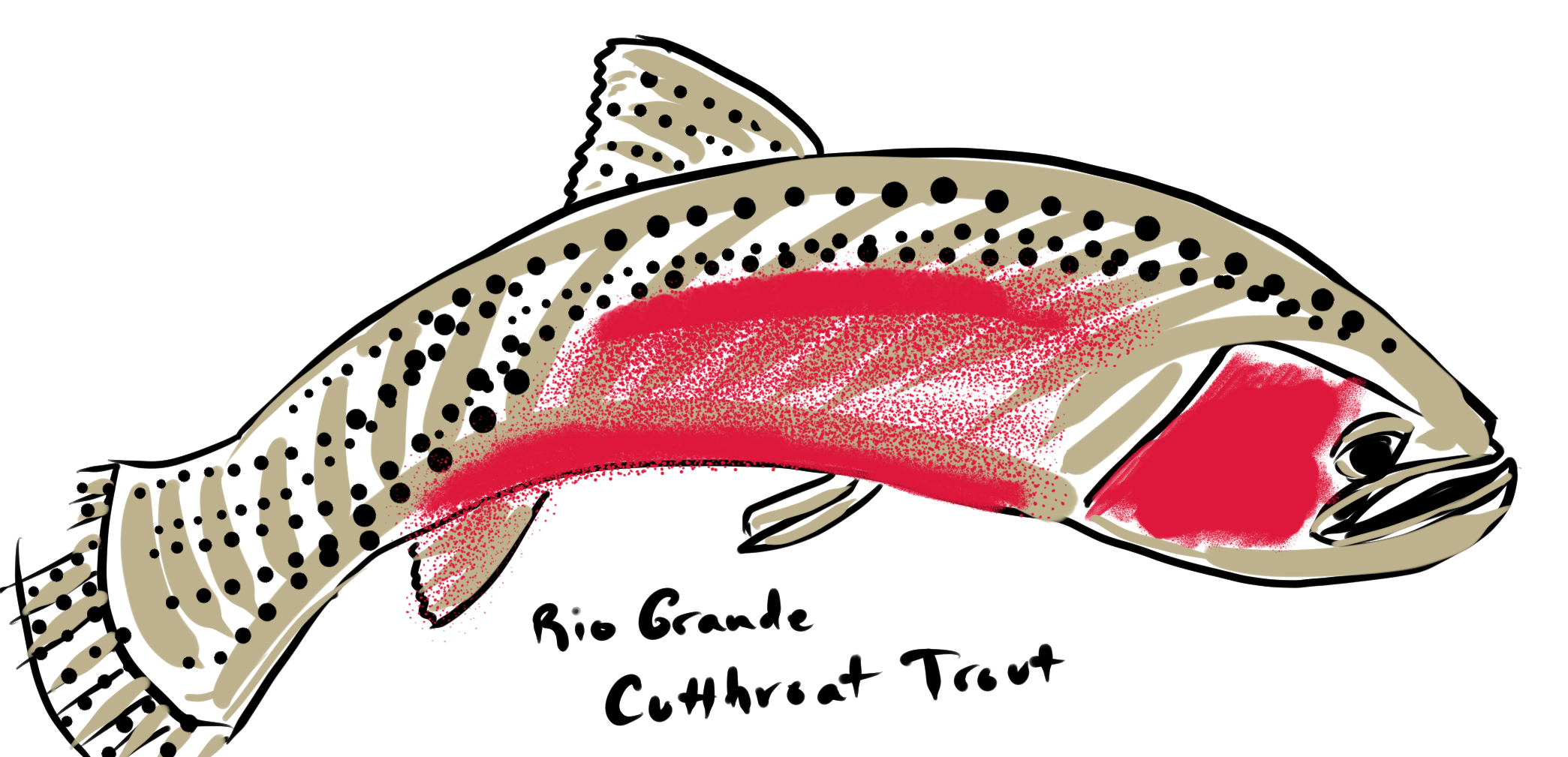102: Rio Grande Cutthroat Trout
Another stranded Ice Age fish
The Rio Grande Cutthroat Trout it the New Mexico State Fish, but we’re lucky enough to have it in Colorado too. Like other trout species we have discussed, habitat loss after European colonization – caused by damming, intensive agriculture, and competition from non-native fish introduced as game stock – means that the RGCT only lives in 10% of its original range today. That range in Colorado is the headwaters of the Rio Grande, in south central Colorado. From 2003 until today, a group of diverse stakeholders have been working on restoring the fish to its native habitat.
The RGCT is the furthest south cutthroat trout species. Around 2 million years ago, the cutthroat trout became distinct from the rainbow trout, and around 70,000 years ago, the RGCT evolved away from the Colorado River cutthroat as glaciers retreated and their population became isolated in the Rio Grande basin. They have a distinctive coloration, with a concentration of black dots near the tail whose density diminishes towards the head. Also, people really like to fish for them! Here’s some tips for how from Colorado Parks and Wildlife, including this story:
In 1878, Forest and Stream magazine reported an account of Colorado Governor
Hunt taking a general from Pennsylvania fishing on Trinchera Creek near Fort
Garland. The story follows that the governor heard a commotion and saw a
big fish flying through the air. He found the general hoisting a three-pound
Rio Grande cutthroat over his shoulder and exclaiming, “oh, I have a leg of
mutton on my hook.”
Sorry the guy in my picture looks a little bummed, but all the reference photos I could find were of fish who’d been caught!
